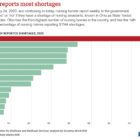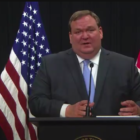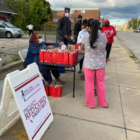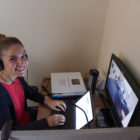-
How Ohio became the No. 1 state for nursing home assistant shortages
This story is from the Investigative Reporting Workshop in collaboration with Eye on Ohio, the nonprofit, nonpartisan Ohio Center for Journalism. Please join Eye on Ohio’s free mailing list or follow IRW on Facebook as this helps us provide more public service reporting. By Savanna Strott Ohio nursing homes reported more shortages of nursing…
-
SIDE BAR: The long road for nursing home legislation in the Statehouse
This story is from the Investigative Reporting Workshop in collaboration with Eye on Ohio, the nonprofit, nonpartisan Ohio Center for Journalism. Please join Eye on Ohio’s free mailing list as this helps us provide more public service reporting. By Savanna Strott As Ohio grapples with the highest number of State Tested Nursing Assistant (STNAs) shortages…
-
Waivers now available for Pandemic Unemployment Overpayments
Officials say approvals will be ‘later this summer’; reaching a customer service rep still an exhaustive process This article provided by Eye on Ohio, the nonprofit, nonpartisan Ohio Center for Journalism. Please join their free mailing list as this helps them provide more public service reporting. By Emily Crebs Maggie Rose applied for pandemic unemployment…
-
How one Ohio city lowered evictions and late rental payments
Early statistics from Cleveland’s Right to Counsel program show promising results – but what will happen when that moratorium ends? By Conor Morris East Side Cleveland resident Dennis Eads ran into some trouble paying rent last year. Eads, a father of five, said he was thankful to have kept his job at a warehouse in…
-
Do you owe ODJFS because of a Pandemic Unemployment Assistance overpayment? You might be eligible for a waiver
State made $1.2 billion in accidental payments, which could be forgiven This article is from Eye on Ohio, the nonprofit, nonpartisan Ohio Center for Journalism. Please join their free mailing list, as this helps provide more public service reporting. By Cid Standifer When Matthew Bishop started getting Pandemic Unemployment Assistance a year ago, it pulled…
-
Fighting to open closed doors: how advocates stepped up efforts to help sex trafficking survivors in a world where hiding victims is easier than ever
This article is from Eye on Ohio, the nonprofit, nonpartisan Ohio Center for Journalism. Please join their free mailing list, as this helps provide more public service reporting. By Christopher Johnston For women survivors of sex trafficking struggling to make ends meet, the COVID-19 pandemic has exacerbated an already desperate situation. Funding programs to support…
-
This Speech Clinic (Literally) Helps Trans People Find Their Voice
This article provided by Eye on Ohio, the nonprofit, nonpartisan Ohio Center for Journalism in partnership with the Buckeye Flame. Please join our free mailing list or the mailing list for the Flame as this helps us provide more public service reporting. By Caitlin Fisher After beginning with some vocal stretches to warm up her…
-
Dodging disconnection
More help is on the way, but will it be enough? This article is from Eye on Ohio, the nonprofit, nonpartisan Ohio Center for Journalism. Please join theirfree mailing list, as this helps provide more public service reporting. By Dan Polletta Janet Cook’s utility bills are stacking up and she doesn’t have enough money to…
-
Ohio Department of Job and Family Services tries to bolster its own workforce by posting jobs with no medical benefits in pandemic
This article is from Eye on Ohio, the nonprofit, nonpartisan Ohio Center for Journalism. Please join their free mailing list, as this helps provide more public service reporting. By Boniface Womber and Bonnie Jean Feldkamp Amid a raging pandemic, Ohio’s agency responsible for looking out for workers’ welfare has started posting full-time temporary jobs with…









